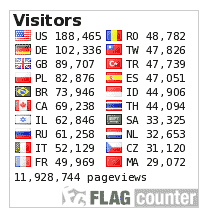Roles of Integrating Information Communication Technology (ICT) in Teaching Speaking at the First Semester of English Students oF FKIP UIR
Keywords:
Teaching Speaking, Information Communication Technology (ICT)Abstract
Speaking skill is an important part of the curriculum in language teaching, this makes it an important for students to be able to speak English. However, the goal of teaching speaking should improve students’ communicative skills as a way to help students express themselves and learn how to follow the social and cultural rules appropriate in each communication circumstance.Hence, Information Communication Technology (ICT) can be used by the English teacher to enhance students’ English Proficiency, especially speaking skill. Thus, the present study aims at investigating the role of Information Communication Technology (ICT) in speaking class at the first semester of English Students of FKIP UIR which consists of 42 students as sample of this research. The researchers used descriptive method and worked by using questionnaires as an instrument for collecting data. The researchers have found that the use of Information Communication Technology (ICT) increases students’ motivation and their speaking performances. It also has great impact on students learning’s effectiveness. In general, students prefered group work activities, free discussion, role play, or students’ presentation. A large number of students declared that their lecturer used technology while teaching speaking. They claimed that using ICThas beneficial and helpful to speak the language. Finally, most students affirmed that the use of ICT developed their speaking skill, increased their knowledge, and creativity. Concerning their attitudes towards their preferable kind of technology that can be used in teaching, some prefer to use laptop/notebook and projector while others enjoyed watching videos.
Downloads
References
and Learning English Language and Literature, International Journal of Scientific and Technology Research, 1 (5), 103-107.
Anderson, J., Semenov, A., Pereverzev, L. and Bulin-Sokolova, E. (2005).
Information and communication technologies in schools. Paris: Unesco.
Al-Zaidiyeen, N. J. (2010). Teachers‟ Attitudes and Levels of Technology Use in
Classrooms, International Education Studies, 3 (2), 211-218.
Ashaver, D., Igyuve, S. M. (2013). The Use of Audio-Visual Materials in the
Teaching and Learning Processes in Colleges of Education in Benne State.
Negeria, IOSR Journal of Research and Method in Education, 1 (6), 44-55.
Cohen, L., Manion, L. and Morrison, K. (1996). A Guide to Teaching Practice.
London: Routledge.
Egan, K. B. (1999). Speaking: A Critical Skill and a Challenge, CALICO Journal,
16 (3), 227-293.
Farahnaz, R. N, Parviz, A, Nazila, K. (2013). The Effect of Using Jigsaw to
Enhance Female Iranian Intermediate EFL Learners‟ Oral Proficiency. Australian Journal of Basic and Applied Sciences, 7(9), 315-326.
Haddad, W., Draxler, A. (2002). Technologies for Education, Paris.67
Harmer, J. (2008). The Practice of English Language Teaching. Harlow, England:
Pearson Longman.
Khamkhien, A. (2010). English Speaking and English Speaking Tests in the Thai
context: A reflection from Thai perspective. English Language Teaching. 3(1), 184-190.
Long, M., Wood, C., Littleton, K., Passenger, T. and Sheehy, K. (2011). The
Psychology of Education. Hoboken: Taylor & Francis.
Madhavaiah, G., Nagaraju, Ch., Peter,S. (2013). Importance of Technology in
Teaching and Learning English Language, International Journal of Scientific Research and Reviews. 2 (3), 146-154
Meadows, J. (2004). Science and ICT in the Primary School. London: David
Fulton Publishers.
Maggioli, G. D. (2009). Teaching English with Technology. Pearson: Longman.
Nicholls, G. (2004). An Introduction to Teaching. London: RoutledgeFalmer.
Owen-Jackson, G. (2000). Learning to Teach Design and Technology in the
Secondary School. London: Routledge Falmer.
Padurean, A., & Margan, M. (2009). Foreign Language Teaching Via ICT. Revista
De Informatică Socială, 6 (12), 97-101.
Pun, M. (2013). The Use of Multimedia Technology in English language Teaching,
International Journal of Interdisciplinary Studies, 1 (1), 29-30.
Rayhan, J. M. (2014). The Impact of Using Role Play Techniques in Improving
Pupils‟ Speaking Skill for Primary School, College of Basic Education, vol.15, 516-530.
Shen, Y. (2013). Balancing Accuracy and Fluency in English Classroom Teaching
to Improve Chinese Non-English Majors„Oral English Ability, Theory and
Practice in Language Studies, 3 (5), 816-822.
Shyamlee, S. D., Phil, M. (2012). Use of Technology in English language
Teaching and Learning, IACSIT press, vol. 33, 150-156.
Sorensen, E. and Ó Murchú , D. (2006). Enhancing learning Through Technology.
Hershey, PA: Information Science Pub.
Srivastava, S. R. (2014). Accuracy VS Fluency in English Classroom, New Man
Iternetional Journal of Multidisciplinary studies, 1 (4), 55-58.
Thornbury, S. 2005. How Teach Speaking. Pearson: Longman.
Ur, P. (1996). A Course in Language Teaching: Practice and Theory. Cambridge
University Press.
Wang, Z. (2014). Developing Accuracy and Fluency in Spoken English of Chinese
EFL Learners, English Language Teaching, 7 (2), 110-118.
Published
How to Cite
Issue
Section
This is an open-access article distributed under the terms of the Creative Commons Attribution-ShareAlike 4.0 International License which permits unrestricted use, distribution, and reproduction in any medium. Users are allowed to read, download, copy, distribute, search, or link to full-text articles in this journal without asking by giving appropriate credit, providing a link to the license, and indicating if changes were made. All of the remixes, transform, or build upon the material must distribute the contributions under the same license as the original.











